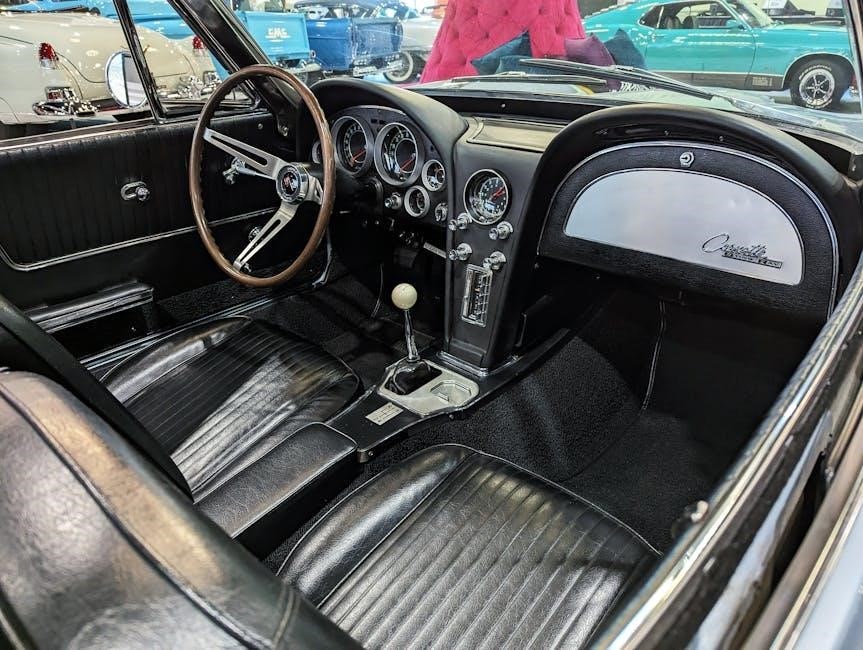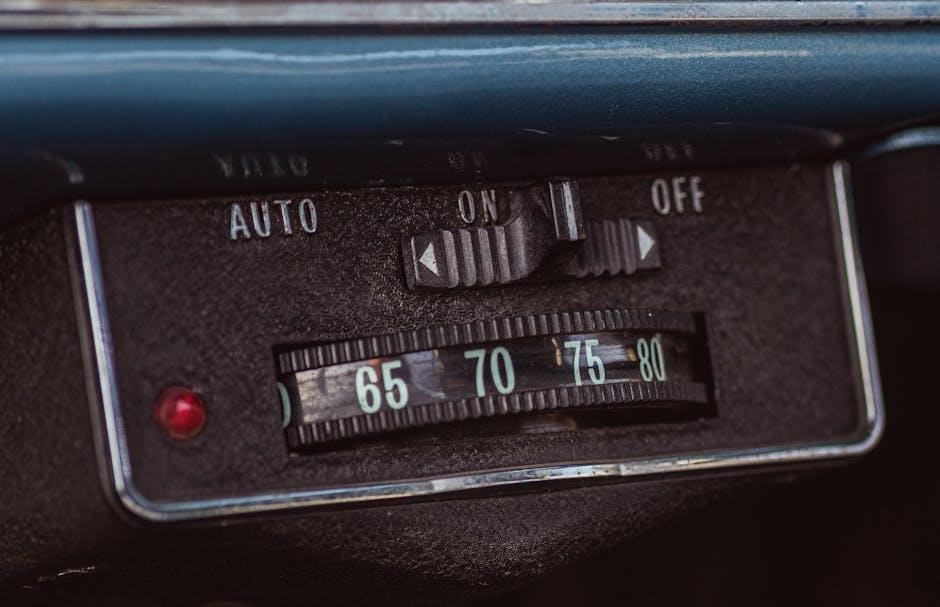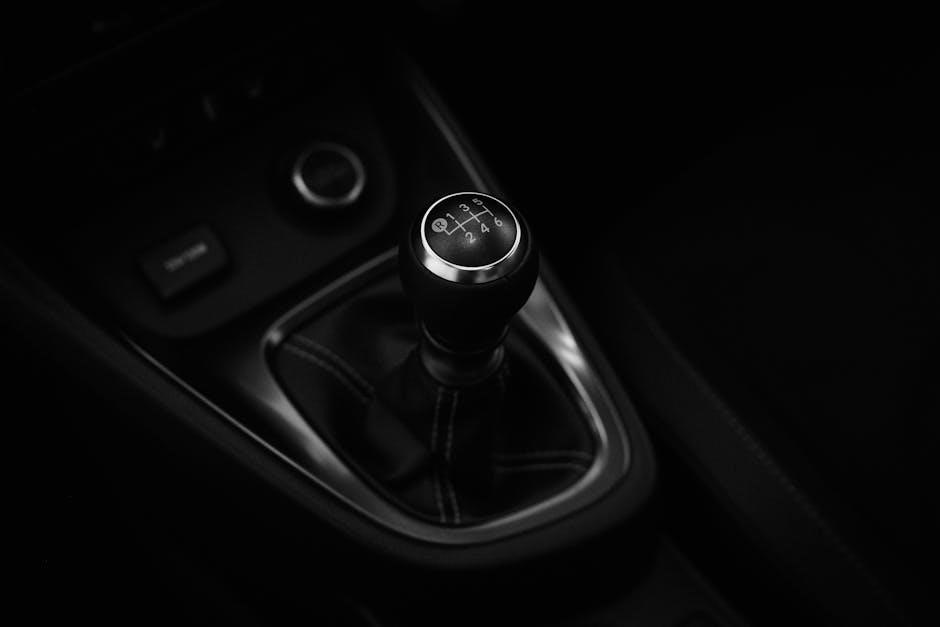Hannah Arendt‚ a renowned philosopher‚ explores the essence of human existence in The Human Condition (1958)‚ examining labor‚ work‚ and action as fundamental human activities․
Her work delves into the distinctions between animal laborans and homo faber‚ emphasizing the transformative power of collective action in shaping political and social realities․
Arendt’s insights remain pivotal in understanding modernity’s impact on human dignity‚ freedom‚ and the public sphere‚ offering timeless reflections on the human condition’s complexities and challenges․
Overview of Hannah Arendt’s Philosophical Contributions
Hannah Arendt‚ a German-American philosopher‚ is renowned for her exploration of the human condition‚ politics‚ and the nature of action․ Her work bridges philosophy and political theory‚ offering profound insights into human existence and societal structures․
In The Human Condition‚ Arendt distinguishes between labor‚ work‚ and action‚ emphasizing action as the highest human activity‚ rooted in collaboration and political engagement․ She highlights the importance of the public sphere and plurality in fostering democratic life․
Her philosophical contributions also critique modernity’s impact on human dignity and freedom‚ providing a framework to address contemporary challenges․ Arendt’s ideas remain influential in political thought and academic discourse‚ offering timeless reflections on human agency and collective responsibility․
The Context and Significance of “The Human Condition” (1958)
The Human Condition‚ published in 1958‚ is Hannah Arendt’s magnum opus‚ exploring the fundamental activities of human life: labor‚ work‚ and action․ The book emerges from her reflections on modernity‚ technology‚ and the rise of totalitarianism‚ offering a critical analysis of how these forces reshape human existence․ Arendt examines how the rise of the social realm has eclipsed the political‚ leading to a decline in authentic human action․ Her work provides a philosophical framework for understanding the challenges of the 20th century‚ while also offering insights into the enduring dilemmas of human freedom‚ dignity‚ and political engagement․ The book remains a cornerstone of political philosophy‚ addressing issues of ongoing relevance․
Key Themes and Concepts in the Book
Hannah Arendt’s The Human Condition centers on labor‚ work‚ and action as fundamental human activities‚ distinguishing them from one another․ Labor is rooted in biological necessity‚ while work creates a lasting world of artifacts․ Action‚ the highest form‚ involves collaborative expression and political engagement․ Arendt critiques modernity for reducing human life to labor‚ eroding the public sphere and political freedom․ She emphasizes plurality‚ the unique condition of human beings‚ and natality‚ the capacity for new beginnings․ These themes explore how modern society’s rise has transformed human existence‚ undermining authentic political action and the vitality of the public realm‚ while offering a vision for reclaiming human dignity and freedom․

The Definition and Scope of the Human Condition
Hannah Arendt defines the human condition as the fundamental experiences and activities that distinguish human existence‚ such as labor‚ work‚ and action‚ which shape political and social life․
Arendt’s Understanding of Labor‚ Work‚ and Action
Hannah Arendt distinguishes between labor‚ work‚ and action as fundamental human activities․ Labor is rooted in biological necessity‚ driven by survival and consumption‚ marking the cyclical nature of life․
Work involves the creation of durable objects‚ providing a sense of permanence and human artifice‚ while action is the highest form‚ enabling collaborative expression and political engagement․
Arendt emphasizes action as uniquely human‚ fostering plurality and the creation of shared meaning‚ thus forming the foundation of political life and collective identity․
The Distinction Between Animal Laborans and Homo Faber
The Distinction Between Animal Laborans and Homo Faber
Hannah Arendt’s distinction between Animal Laborans and Homo Faber highlights contrasting aspects of human existence․ Animal Laborans represents humanity as driven by biological necessity‚ consumed by labor for survival and reproduction‚ characterized by endless cycles of consumption and production․
In contrast‚ Homo Faber embodies the creative‚ tool-making capacity of humans‚ focused on crafting durable objects that transcend immediate needs‚ reflecting human ingenuity and the desire for permanence․

Arendt sees Homo Faber as elevating human life beyond mere biological existence‚ fostering a sense of mastery and purpose‚ while Animal Laborans underscores the inescapable biological dimensions of human life․
The Role of the Vita Activa in Human Existence
The vita activa‚ or active life‚ is central to Hannah Arendt’s philosophy‚ emphasizing human engagement and interaction with the world․ It encompasses action‚ work‚ and labor‚ which Arendt sees as essential for creating meaningful lives․
Through the vita activa‚ individuals establish their unique identities and contribute to the shared human experience․ Arendt argues that active participation fosters a sense of purpose and belonging‚ enabling humans to transcend mere biological existence․
This concept underscores the importance of collaboration and public engagement‚ highlighting how collective action shapes political and social realities․ Arendt’s vision of the active life remains a powerful call to embrace freedom and dignity through shared endeavors․

The Political and Social Implications of the Human Condition
Arendt’s analysis reveals the degradation of the public sphere‚ highlighting how bureaucracy and consumerism erode collective action and political freedom in modern society․
The Public Sphere and Its Importance in Democratic Life
Hannah Arendt emphasizes the public sphere as a vital space for democratic life‚ where individuals engage in open dialogue and collective action․ She argues that the public sphere fosters plurality‚ enabling diverse perspectives to emerge and shape political discourse․ In The Human Condition‚ Arendt warns that the erosion of this sphere threatens democracy‚ as it undermines the ability to address common concerns and hold power accountable․
The decline of the public sphere in modern society‚ often due to bureaucratic and technological advancements‚ reflects Arendt’s concerns about the commodification of human activity․ Revitalizing this space remains essential for reclaiming democratic agency and ensuring the dignity of human action in the political realm․
The Concept of Plurality and Its Relation to Human Action
Hannah Arendt’s concept of plurality underscores the fundamental human condition of diversity and differentiation․ She argues that plurality is essential for meaningful action‚ as it allows for the exchange of diverse perspectives and the creation of a shared‚ intersubjective reality․ Through plurality‚ individuals transcend their private experiences‚ engaging in collective endeavors that give rise to a common world․
Arendt distinguishes plurality from uniformity‚ emphasizing that true plurality enriches human action by fostering creativity‚ dialogue‚ and innovation․ This concept is central to her vision of a vibrant public sphere‚ where diverse voices collaborate to address shared challenges and shape a meaningful political life․
The Impact of Modernity on the Human Condition
Hannah Arendt examines how modernity has profoundly altered the human condition‚ emphasizing the rise of labor and consumption at the expense of meaningful action and political engagement․ She argues that modern society’s focus on economic productivity and technological advancement has eroded the public sphere‚ reducing human activity to repetitive and alienating tasks․
This shift has led to a decline in the plurality of human experiences‚ as individuals become increasingly isolated in their private spheres․ Arendt warns that modernity’s emphasis on efficiency and utility undermines the potential for collective action and the cultivation of a shared‚ meaningful world․

The Philosophical Foundations of Arendt’s Thought
- Arendt’s philosophy draws on ancient Greek thought‚ particularly Aristotle’s concepts of praxis and the polis‚ shaping her ideas on action and political life․
- Kant’s moral philosophy and reason influenced her understanding of human dignity and the role of judgment in ethical and political decision-making․
- Heidegger’s existential phenomenology inspired her exploration of human Being and the distinction between labor‚ work‚ and action in the modern world․
The Influence of Ancient Greek Philosophy on Arendt
Hannah Arendt’s thought was profoundly shaped by ancient Greek philosophy‚ particularly Aristotle’s concepts of praxis and the polis‚ which emphasize political action and communal life․
Aristotle’s distinction between bios (political life) and zoe (biological existence) influenced Arendt’s focus on the public sphere and the unique capacity for action in human beings․
The Greek ideal of plurality‚ as seen in tragedy and democratic discourse‚ also inspired her understanding of human diversity and the importance of shared spaces for political engagement․
By integrating these classical ideas‚ Arendt grounded her philosophy in a tradition that values human interaction and the pursuit of the common good‚ reflecting the enduring relevance of Greek thought in modern political theory․
Kant and the Role of Reason in Human Action
Hannah Arendt drew on Immanuel Kant’s moral philosophy to explore the role of reason in human action‚ emphasizing its capacity to guide ethical judgment and political decision-making․
Kant’s distinction between theoretical and practical reason influenced Arendt’s view of action as a realm where reason transcends individual self-interest to consider the universal moral law․
Arendt adapted Kant’s concept of the “kingdom of ends” to advocate for a political sphere where actions align with principles of justice and respect for human dignity․
While she critiqued Kant’s abstraction from concrete political realities‚ Arendt valued his emphasis on reason as a tool for ethical deliberation in public life‚ fostering a bridge between philosophy and political action․
Heidegger’s Influence on Arendt’s Concept of Being
Heidegger’s existential philosophy profoundly shaped Hannah Arendt’s understanding of Being‚ particularly his concept of “Being-in-the-world‚” which emphasizes human existence as practical and rooted in the everyday․
Arendt adapted Heidegger’s notion of “Being-with” to highlight the importance of plurality and shared human experience‚ central to her concept of action in The Human Condition․
While she critiqued Heidegger’s focus on individual existence‚ Arendt incorporated his insights into her exploration of human activity‚ distinguishing labor‚ work‚ and action as essential aspects of the human condition․
Heidegger’s influence is evident in Arendt’s emphasis on the uniqueness of human existence and its potential for meaningful action within the public sphere․

The Relationship Between Thinking and Action
Hannah Arendt explores the interplay between thinking and action‚ emphasizing how contemplation enriches collective efforts‚ fostering meaningful engagement in the public sphere and human affairs․
The Paradox of Thought and Action in Arendt’s Philosophy
Hannah Arendt’s philosophy highlights the intricate relationship between thought and action‚ often viewed as separate yet interconnected realms․ She argues that thinking‚ while essential‚ can sometimes hinder action due to its reflective nature․ Action‚ conversely‚ requires a departure from solitary contemplation to engage with the world․ Arendt emphasizes that thinking prepares the ground for meaningful action by fostering understanding and judgment․ However‚ she warns that excessive introspection can paralyze individuals‚ preventing them from participating in the public sphere․ This paradox underscores the necessity of balancing intellectual reflection with active engagement to achieve true political and social change․ Her ideas continue to resonate in contemporary debates about agency and responsibility․
The Role of Judgment in Political Action
Hannah Arendt assigns judgment a central role in political action‚ viewing it as the bridge between thought and practice․ She distinguishes between determinative judgment‚ which applies general rules to specific cases‚ and reflective judgment‚ which navigates unique situations without predefined categories․ Arendt argues that reflective judgment is vital in politics‚ where unprecedented events often demand innovative solutions․ This form of judgment fosters pluralistic understanding‚ enabling individuals to consider multiple perspectives and act in concert with others․ By emphasizing judgment‚ Arendt highlights the importance of discernment and deliberation in maintaining the integrity of public life and addressing complex societal challenges effectively․
The Responsibility of the Thinker in the Public Sphere
Hannah Arendt emphasizes the thinker’s duty to engage actively in the public sphere‚ asserting that intellectual detachment from political life undermines both thought and action․ She argues that thinkers must transcend academic isolation and address societal challenges‚ fostering dialogue and critical reflection․ Arendt believes that thinkers should not shy away from controversial issues but instead confront them with courage and clarity․ By doing so‚ they can illuminate complex realities and inspire ethical decision-making․ This responsibility extends to challenging authority and advocating for justice‚ ensuring that intellectual inquiry serves the common good and upholds human dignity in a fragmented world․

Hannah Arendt’s Critique of Modern Society
Arendt critiques modern society for prioritizing consumerism and bureaucratic control‚ leading to the alienation of labor and the erosion of meaningful political engagement and human dignity․
The Rise of the Social and the Decline of the Political
Hannah Arendt argues that modern society has witnessed the ascendancy of the “social” realm‚ which prioritizes economic and biological needs over political action and public discourse․
This shift has led to the decline of the political‚ as the public sphere is increasingly dominated by bureaucratic and technological control‚ diminishing the space for free‚ spontaneous human action․
Arendt contends that this transformation alienates individuals from their political capacities‚ reducing human life to mere survival and consumption‚ rather than fostering the plurality and collective action essential for a vibrant democratic society․
The Alienation of Labor and the Commodification of Work
Hannah Arendt examines how modernity has transformed labor into a commodity‚ reducing human activity to mere economic productivity and biological survival․
This commodification alienates individuals from their creative potential‚ as work becomes devoid of meaningful purpose‚ fostering a society driven by consumption rather than genuine human flourishing․
Arendt critiques the rise of a consumer society‚ where the degradation of work into labor erodes the distinction between animal laborans and homo faber‚ undermining the capacity for free and creative action essential to human dignity․
The Erosion of the Public Sphere in Contemporary Society
Hannah Arendt critiques the decline of the public sphere in modern society‚ where meaningful political discourse is replaced by bureaucratic and consumerist forces․
The rise of mass society and technological advancements has led to the privatization of public spaces‚ reducing opportunities for collective action and genuine political engagement․
This erosion undermines the plurality essential for democratic life‚ as individuals become isolated consumers rather than active citizens‚ diminishing the capacity for shared deliberation and communal responsibility․
Arendt warns that without a vibrant public sphere‚ freedom and solidarity are imperiled‚ leaving society vulnerable to authoritarianism and the dehumanizing effects of commodification․

The Relevance of “The Human Condition” Today
Hannah Arendt’s insights into labor‚ work‚ and action remain vital‚ offering a framework to navigate contemporary challenges of technological change‚ political polarization‚ and the erosion of public discourse․
Contemporary Challenges to the Human Condition
Today‚ the human condition faces unprecedented challenges‚ including technological domination‚ political polarization‚ and the erosion of meaningful public discourse․ Automation and artificial intelligence threaten the dignity of labor‚ while globalization obscures the boundaries of collective action․ Climate change and environmental degradation underscore the fragility of human existence‚ prompting questions about sustainability and ethics․ Additionally‚ the rise of surveillance capitalism and data manipulation raises concerns about privacy and individual autonomy․ These challenges demand a reevaluation of Arendt’s concepts‚ particularly her emphasis on the vita activa and the necessity of preserving the public sphere in an increasingly fragmented world․
The Renewed Importance of Arendt’s Ideas in the 21st Century
Hannah Arendt’s ideas have gained renewed relevance in the 21st century as society grapples with political polarization‚ technological transformation‚ and the erosion of public trust․ Her concepts of power‚ authority‚ and the public sphere resonate deeply in an era marked by rising authoritarianism and the commodification of information․ The distinction between labor and action‚ as outlined in The Human Condition‚ challenges contemporary thinkers to reconsider the value of collective action in addressing global issues like climate change and inequality․ Arendt’s emphasis on plurality and intersubjectivity offers a framework for navigating the complexities of multiculturalism and identity politics‚ making her philosophy a vital resource for addressing modern dilemmas․
Applying Arendt’s Concepts to Current Political and Social Issues
Hannah Arendt’s ideas provide a compelling lens for analyzing contemporary political and social challenges․ The concept of plurality‚ central to her work‚ highlights the importance of diverse perspectives in addressing issues like immigration and identity politics․ Her critique of bureaucratic systems resonates in discussions on institutional failures and corruption․ Additionally‚ Arendt’s distinction between labor‚ work‚ and action offers insights into the gig economy and the devaluation of human effort in a hyper-capitalist society․ By applying her framework‚ scholars and activists can better understand the erosion of the public sphere and advocate for renewed civic engagement in an age of political disillusionment and technological dominance․

Critiques and Controversies Surrounding Arendt’s Work
Arendt’s concepts‚ particularly her view of action and the human condition‚ have faced criticism for their perceived Western-centric perspective and lack of inclusivity regarding gender and race․
Criticism of Arendt’s Concept of Action and Its Limitations
Hannah Arendt’s concept of action in The Human Condition has drawn criticism for its perceived exclusivity and lack of inclusivity․ Some argue that her focus on public‚ collective action overlooks the significance of individual and private experiences․ Additionally‚ critics contend that her distinction between labor‚ work‚ and action may not fully account for the complexities of modern societies‚ where these categories often blur․ Others challenge her emphasis on the political sphere‚ suggesting it neglects the role of systemic structures and economic inequalities in shaping human activity․ These critiques highlight potential limitations in Arendt’s framework for addressing contemporary social and political challenges․
Debates on the Universality of the Human Condition
Debates surrounding the universality of Hannah Arendt’s concept of the human condition often question its applicability across diverse cultural and historical contexts․ Critics argue that her ideas‚ rooted in Western philosophy‚ may not fully capture the experiences of non-Western societies or marginalized groups․ Some scholars challenge the notion of a single‚ universal human condition‚ suggesting that it risks overlooking the unique perspectives and struggles of different communities; Conversely‚ supporters argue that Arendt’s emphasis on shared human experiences‚ such as plurality and action‚ provides a framework for understanding common challenges across cultures․ This tension between particularity and universality remains a central point of discussion in contemporary debates․
Feminist and Postcolonial Critiques of Arendt’s Philosophy
Feminist critics argue that Hannah Arendt’s philosophy often overlooks gender dynamics‚ neglecting the unique experiences of women in her analysis of labor‚ work‚ and action․ They contend that her distinction between the private and public spheres‚ while insightful‚ reinforces gendered divisions that marginalize women’s contributions to political life․ Similarly‚ postcolonial scholars critique Arendt’s Eurocentric perspective‚ noting its limited engagement with colonialism and racial oppression․ They argue that her concept of the human condition does not adequately address the experiences of colonized peoples or the global power structures that shape human existence․ These critiques highlight the need for a more inclusive understanding of the human condition‚ one that accounts for diverse identities and histories․

The Legacy of Hannah Arendt and “The Human Condition”
Hannah Arendt’s The Human Condition endures as a foundational text in political philosophy‚ influencing contemporary thought on democracy‚ action‚ and the public sphere‚ ensuring her ideas remain vital․
Arendt’s Influence on Contemporary Political Thought
Hannah Arendt’s ideas continue to profoundly shape contemporary political thought‚ offering critical insights into democracy‚ power‚ and collective action․ Her concept of plurality resonates in debates on identity‚ diversity‚ and inclusivity‚ emphasizing the importance of diverse perspectives in public life․ The notion of the public sphere as a space for dialogue and deliberation remains central to democratic theory‚ influencing movements for participatory governance․ Arendt’s critique of bureaucratic structures and totalitarianism informs analyses of modern authoritarianism․ Her emphasis on human agency and moral responsibility inspires activists and scholars alike‚ making her work a cornerstone for addressing contemporary challenges like inequality‚ technological domination‚ and the erosion of civic engagement․
The Enduring Relevance of “The Human Condition” in Academic Discourse
The Human Condition remains a cornerstone of academic discourse‚ offering profound insights into human existence and society․ Its exploration of labor‚ work‚ and action continues to inspire interdisciplinary studies across philosophy‚ political science‚ and sociology․ Arendt’s concepts‚ such as the public sphere and plurality‚ are frequently invoked in discussions on democracy and globalization․ The book’s critique of modernity resonates in contemporary debates on technology‚ consumerism‚ and the commodification of work․ Scholars worldwide adapt Arendt’s ideas to address current issues‚ ensuring her work’s relevance in understanding the complexities of human life and society in the 21st century․
The Inspiration of Arendt’s Ideas for Future Generations
Hannah Arendt’s philosophy continues to inspire future generations by emphasizing the importance of critical thinking and active engagement in the public sphere․ Her ideas on plurality‚ collective action‚ and the human condition encourage young scholars and activists to reflect on the challenges of modernity and the role of individuals in shaping society․ By highlighting the transformative power of collaborative efforts‚ Arendt’s work motivates new thinkers to address contemporary issues with a renewed sense of responsibility and creativity․ Her legacy serves as a catalyst for fostering dialogue and innovation‚ ensuring her relevance in guiding future intellectual and political discourse for years to come․
Hannah Arendt’s The Human Condition offers profound insights into human existence‚ emphasizing action‚ plurality‚ and the public sphere’s vitality․ Her ideas call for a renewed commitment to fostering meaningful engagement and collective responsibility in an increasingly complex world‚ ensuring the enduring relevance of her philosophy for future generations․
Summarizing the Key Insights of “The Human Condition”
The Human Condition by Hannah Arendt is a profound exploration of human existence‚ distinguishing between labor‚ work‚ and action as fundamental human activities․ Arendt argues that action‚ rooted in plurality and natality‚ is the highest human faculty‚ enabling individuals to create meaningful change and forge collective identities․ She critiques the rise of modern society’s emphasis on labor and consumption‚ which she sees as eroding the public sphere and political freedom․ Arendt’s concept of the vita activa—encompassing labor‚ work‚ and action—highlights the importance of engaging with the world to sustain human dignity and freedom․ Her work remains a critical framework for understanding the challenges of modernity and the enduring need for civic engagement and collective responsibility․
The Timeless Value of Arendt’s Philosophy
Hannah Arendt’s philosophy‚ as articulated in The Human Condition‚ remains remarkably relevant‚ offering insights into contemporary challenges․ Her analysis of labor‚ work‚ and action provides a lens to understand human agency and societal structures․ Arendt’s emphasis on plurality and the public sphere underscores the importance of collective action and democratic engagement․ Her critique of modernity’s alienating effects resonates in today’s context of technological advancement and political polarization․ The enduring value of her thought lies in its ability to provoke reflection on human dignity‚ freedom‚ and the ethical dimensions of political life‚ making her work a vital resource for addressing 21st-century issues․
The Call to Action: Revitalizing the Public Sphere
Hannah Arendt’s The Human Condition concludes with a compelling call to revitalize the public sphere‚ emphasizing its crucial role in fostering democratic life and human plurality․ She argues that the public sphere‚ as a space for collective action and deliberation‚ is essential for maintaining freedom and preventing political alienation․ In today’s context‚ characterized by increasing polarization and technological dominance‚ Arendt’s call resonates strongly․ By engaging in meaningful dialogue and collaborative efforts‚ individuals can reclaim and strengthen the public sphere‚ thereby preserving the vitality of democratic societies․ This call to action remains a powerful reminder of the necessity of active citizenship and communal responsibility․

































































